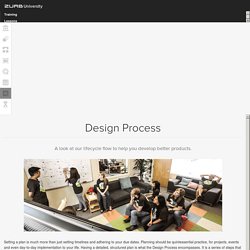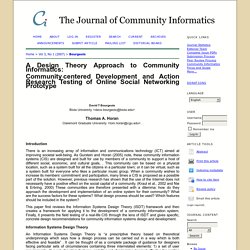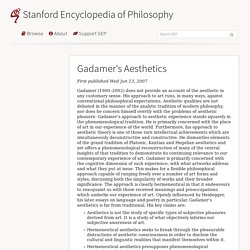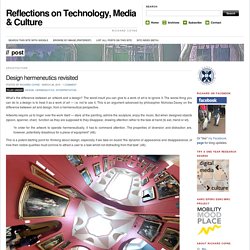

Design Process. Setting a plan is much more than just setting timelines and adhering to your due dates.

Planning should be quintessential practice, for projects, events and even day-to-day implementation to your life. Having a detailed, structured plan is what the Design Process encompasses. It is a series of steps that one follows during the formulation of a product from start-to-finish. In short, the design process is a five-step design thinking process. For us at ZURB, the process includes, but not limited to: identifying opportunities, creating lo-fi sketches, determining requirements of your product, developing a style guide, and then identifying and rectifying any problems your product may have. By having an established process to follow it allows us to focus on the main functions and core principles of our current and future projects.
Previous Process This is ZURB’s original design process flow. New Process Though not much has changed throughout the process, we've streamlined it. Define Ideate Build. Design Process. Convertible Shoes: Function, Fashion and Design - Activity - www.teachengineering.org. Summary Students teams design and build shoe prototypes that convert between high heels and athletic shoes.

They apply their knowledge about the mechanics of walking and running as well as shoe design (as learned in the associated lesson) to design a multifunctional shoe that is both fashionable and functional. Engineering Connection An amazing amount of engineering goes into the design of shoes. Shoes must withstand a multitude of forces, stresses and strains on a daily basis and withstand them for the life of the shoe. Educational Standards Each TeachEngineering lesson or activity is correlated to one or more K-12 science, technology, engineering or math (STEM) educational standards. All 100,000+ K-12 STEM standards covered in TeachEngineering are collected, maintained and packaged by the Achievement Standard Network (ASN), a project of JES & Co. Next Generation Science Standards: Science Common Core State Standards: Math Colorado: Math Colorado: Science Learning Objectives Materials List. A Design Theory Approach to Community Informatics: Community-Centered Development and Action Research Testing of Online Social Networking Prototype.
A Design Theory Approach to Community Informatics: Community-centered Development and Action Research Testing of Online Social Networking Prototype David T Bourgeois Biola University <dave.bourgeois@biola.edu> Thomas A.

Horan Claremont Graduate University <tom.horan@cgu.edu>. Introduction There is an increasing array of information and communications technology (ICT) aimed at improving societal well-being. Gadamer's Aesthetics. 1.

Art as Interlocutor Gadamer's aesthetics fosters an attentiveness towards the mystery of the given and its unexpected folds of meaningfulness. Gadamer's arguments are varied, ushering the reader towards an aesthetic attentiveness rather than making iconoclastic declarations about what the aesthetic is. Design Thinking, Design Theory. Reflections on Technology, Media & Culture. What’s the difference between an artwork and a design?

The worst insult you can give to a work of art is to ignore it. The worse thing you can do to a design is to treat it as a work of art — i.e. not to use it. This is an argument advanced by philosopher Nicholas Davey on the difference between art and design, from a hermeneutical perspective. Artworks require us to linger over the work itself — stare at the painting, admire the sculpture, enjoy the music. But when designed objects (spoon, spanner, chair) function as they are supposed to they disappear, drawing attention rather to the task at hand (to eat, mend or sit). “In order for the artwork to operate hermeneutically, it has to command attention. This is a potent starting point for thinking about design, especially if we take on board “the dynamic of appearance and disappearance, of how their visible qualities must connive to attract a user to a task whilst not distracting from that task” (46).
Models, Metaphors and the Hermeneutics of Designing on JSTOR. Vonzweck. Conversations with the past: hermeneutics for designers. To give you an idea of how hermeneutics can be applied to design, I’ll discuss a building by the American architect Louis Kahn.

As one of America’s foremost 20th century architects he is seen as a bridge figure between classical antiquity and modernism. Born in Estonia in 1901, he emigrated to Philadelphia when he was 5 years old. Although his parents were very poor, his remarkable talent for drawing gained him the scholarships to make it to university. At the university’s architecture department he was trained as a Beaux Arts architect –a movement that sought to combine the harmonies of classical architecture with the ideas of the Enlightenment. Yet, just when he was ready to enter the labour market Le Corbusier revealed his modernist Villa Savoye to the world and all that Kahn had learned seemed worthless. At the age of 50 Kahn got lucky. He came to understand a different way to apply his Beaux Arts knowledge to architecture. . — Alberto Pérez-Gómez — Louis Kahn Phillips Exeter Library. Hermeneutics for Designers.
“To understand the whole of a book it is necessary to grasp its individual words and sentences, but those words and sentences only have meaning within the larger context of the book, hence interpretation must be a matter of constant revision: revising one’s sense of the whole as one grasps the individual parts, and revising one’s sense of the parts as the meaning of the whole emerges.”
